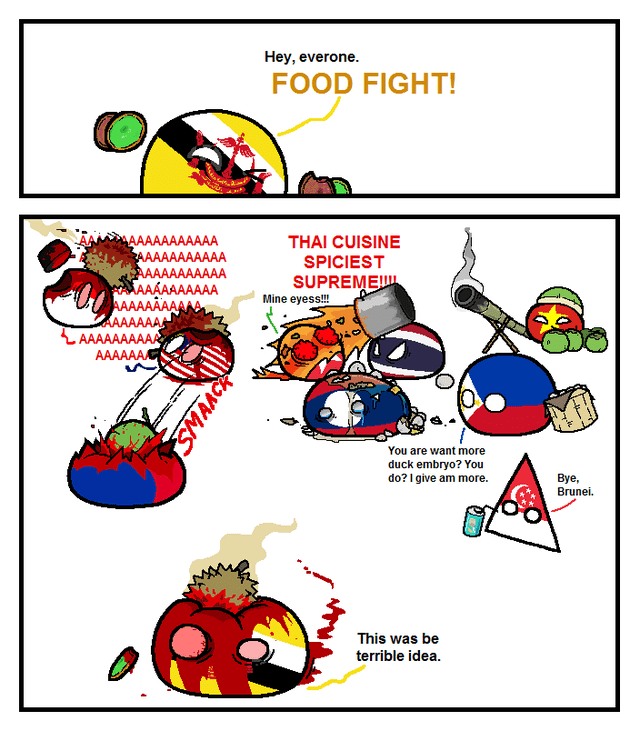Thai and Vietnamese cuisine both focus on fresh ingredients, bright flavors and healthy cooking. Both cuisines heavily rely on fresh herbs, spices and aromatics for an intense flavor. However, they differ in the type of staples they use. Thai cuisine uses more coconut milk, shrimp paste and fish sauce, while Vietnamese cuisine uses dried rice noodles, rice paper and fish sauce. Thai cooking is known for its fierce use of heat while Vietnamese cooking is more about balance and delicacy than fiery heat. In the end, it all comes down to personal preference, but it’s worth trying both cultures to appreciate the range of Southeast Asian cuisine.
Thai vs. Vietnamese Cuisine: A Southeast Asian Food Fight
Thai and Vietnamese cuisines are two of the most popular Southeast Asian food cultures worldwide. Both focus on fresh ingredients, bright flavors, and healthy cooking. But which cuisine reigns supreme? Let’s take a closer look at the similarities and differences between these two regional favorites.
Ingredients
Both Thai and Vietnamese cuisines rely heavily on fresh herbs, spices, and aromatics to pack in their flavors. Lemongrass, chili, ginger, garlic, and lime are just a few ingredients that feature prominently in both cuisines. However, they differ in the type of staples they use. Thai cuisine uses more coconut milk, shrimp paste, and fish sauce, while Vietnamese cuisine uses dried rice noodles, rice paper, and fish sauce.
Flavors
Thai cuisine is known for its balance of flavors. Its dishes often combine sour, sweet, salty and spicy tastes. For instance, Pad Thai is a balanced combination of sweet, salty, and sour flavors. On the other hand, Vietnamese dishes are known for their simplicity, freshness, and lightness. They frequently use fresh herbs, such as cilantro and mint, which have an incredibly minty, fragrant taste. Pho is a classic Vietnamese dish that has a rich broth base, and the main flavor of the dish is the spices and herbs in the broth.
Cooking Techniques
Thai cooking is known for its fierce use of heat. Stir-frying and grilling are common cooking methods that are used to create smokey and charred flavors. Thai cuisine also loves to use curry paste in its dishes, which is often made with fresh herbs and roasted spices that are grounded to a paste. Vietnamese cooking, on the other hand, is more about balance and delicacy than fiery heat. Steaming, simmering, and boiling are common techniques used to make Vietnamese dishes. And unlike Thai cuisine, Vietnamese dishes don’t often incorporate curry.
Popular Dishes
Thai cuisine has some widely renowned dishes that include Pad Thai, Tom Yum soup, and green curry. Pad Thai is a stir-fried rice noodle dish with peanuts, bean sprouts, and egg. On the other hand, Tom Yum soup is a hot and sour broth that is made with lemongrass, shrimp, and tomatoes. And green curry is a rich curry that contains chicken, green chilies, coconut milk.
Vietnamese cuisine has its classics such as Pho, Banh Mi, and Bun Cha. Pho, a classic Vietnam noodle soup, simplistically made with meat, herbs, and raw bean sprouts. Banh Mi, a French-Vietnamese fusion sandwich, contains crispy baguette filled with pork, cucumber, cilantro and more. And Bun Cha is a meat broth dish that is served over vermicelli noodles with grilled pork and a variety of fresh herbs.
Conclusion
Though both Thai and Vietnamese cuisines have some similarities, they offer unique and distinct tastes, flavors, and cooking techniques that set them apart. Thai cuisine is known for its spicy and bold flavors, while Vietnamese dishes are all about freshness and balance. In the end, it all comes down to personal preference, but it’s worth trying both cultures to appreciate the range of Southeast Asian cuisine.
